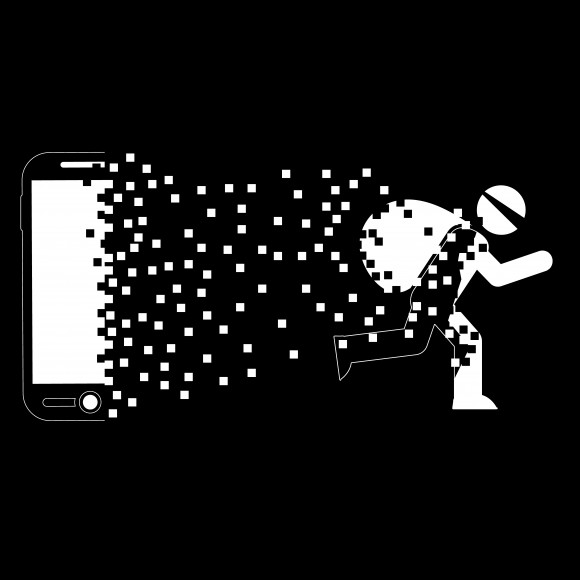The massive data breach at the U.S. Office of Personnel Management (OPM) that exposed background investigations and fingerprint data on millions of Americans was the result of a cascading series of cybersecurity blunders from the agency’s senior leadership on down to the outdated technology used to secure the sensitive data, according to a lengthy report released today by a key government oversight panel.

OPM offices in Washington, DC. Image: Flickr.
The 241-page analysis, commissioned by the U.S. House Oversight & Government Reform Committee, blames OPM for jeopardizing U.S. national security for more than a generation.
The report offers perhaps the most exhaustive accounting and timeline of the breach since it was first publicly disclosed in mid-2015. According to the document, the lax state of OPM’s information security left the agency’s information systems exposed for any experienced hacker to infiltrate and compromise.
“The agency’s senior leadership failed to fully comprehend the extent of the compromise, allowing the hackers to remove manuals and other sensitive materials that essentially provided a roadmap to the OPM IT environment and key users for potential compromise,” the report charges.
Probably the most incisive portion of the assessment is the timeline of major events in the breach, which details a series of miscalculations on the part of the OPM leadership. The analysis paints the picture of a chronic — almost willful — underestimation by senior leadership at OPM about the seriousness of the threat facing the agency, until it was too late.
According to the report, the OPM first learned something was amiss on March 20, 2014, when the US-CERT notified the agency of data being exfiltrated from its network. In the ensuing weeks, OPM worked with US-CERT to implement a strategy to monitor the attackers’ movements to gather counterintelligence.
The only problem with this plan, according to the panel, was that the agency erroneously believed it had cornered the intruder. However, the hacker that OPM and US-CERT had eyes on wasn’t alone. While OPM monitored the first hacker [referred to in the report only as Hacker X1] on May 7, 2014 another hacker posed as an employee of an OPM contractor (Keypoint) performing background investigations. That intruder, referred to as Hacker X2, used the contractor’s OPM credentials to log into the OPM system, install malware and create a backdoor to the network.
As the agency monitored Hacker X1’s movements through the network, the committee found, it noticed hacker X1 was getting dangerously close to the security clearance background information. OPM, in conjunction with DHS, quickly developed a plan to kick Hacker X1 out of its system. It termed this remediation “the Big Bang.” At the time, the agency was confident the planned remediation effort on May 27, 2014 eliminated Hacker X1’s foothold on their systems.
The decision to execute the Big Bang plan was made after OPM observed the attacker load keystroke logging malware onto the workstations of several database administrators, the panel found.
“But Hacker X2, who had successfully established a foothold on OPM’s systems and had not been detected due to gaps in OPM’s security posture, remained in OPM’s systems post-Big Bang,” the report notes.
On June 5, malware was successfully installed on a KeyPoint Web server. After that, X2 moved around OPM’s system until July 29, 2014, when the intruders registered opmlearning.org — a domain the attackers used as a command-and-control center to manage their malware operations.
Beginning in July through August 2014, the Hacker X2 exfiltrated the security clearance background investigation files. Then in December 2014, 4.2 million personnel records were exfiltrated.
On March 3, 2015, wdc-news-post[dot]com was registered by the attackers, who used it as a command-and-control network. On March 26, 2015, the intruders begin stealing fingerprint data. Continue reading





 According to
According to 

 On Feb. 20, 2016, James William Schwartz, 84, was going about his daily routine, which mainly consisted of caring for his wife, MaryLou. Mrs. Schwartz was suffering from the end stages of endometrial cancer and wasn’t physically mobile without assistance. When Mr. Schwartz began having a heart attack that day, MaryLou went to use her phone to call for help and discovered it was completely shut off.
On Feb. 20, 2016, James William Schwartz, 84, was going about his daily routine, which mainly consisted of caring for his wife, MaryLou. Mrs. Schwartz was suffering from the end stages of endometrial cancer and wasn’t physically mobile without assistance. When Mr. Schwartz began having a heart attack that day, MaryLou went to use her phone to call for help and discovered it was completely shut off. On July 5, 2016, KrebsOnSecurity reached out to Bellevue, Wash., based Eddie Bauer after hearing from several sources who work in fighting fraud at U.S. financial institutions. All of those sources said they’d identified a pattern of fraud on customer cards that had just one thing in common: They were all recently used at some of Eddie Bauer’s
On July 5, 2016, KrebsOnSecurity reached out to Bellevue, Wash., based Eddie Bauer after hearing from several sources who work in fighting fraud at U.S. financial institutions. All of those sources said they’d identified a pattern of fraud on customer cards that had just one thing in common: They were all recently used at some of Eddie Bauer’s 
